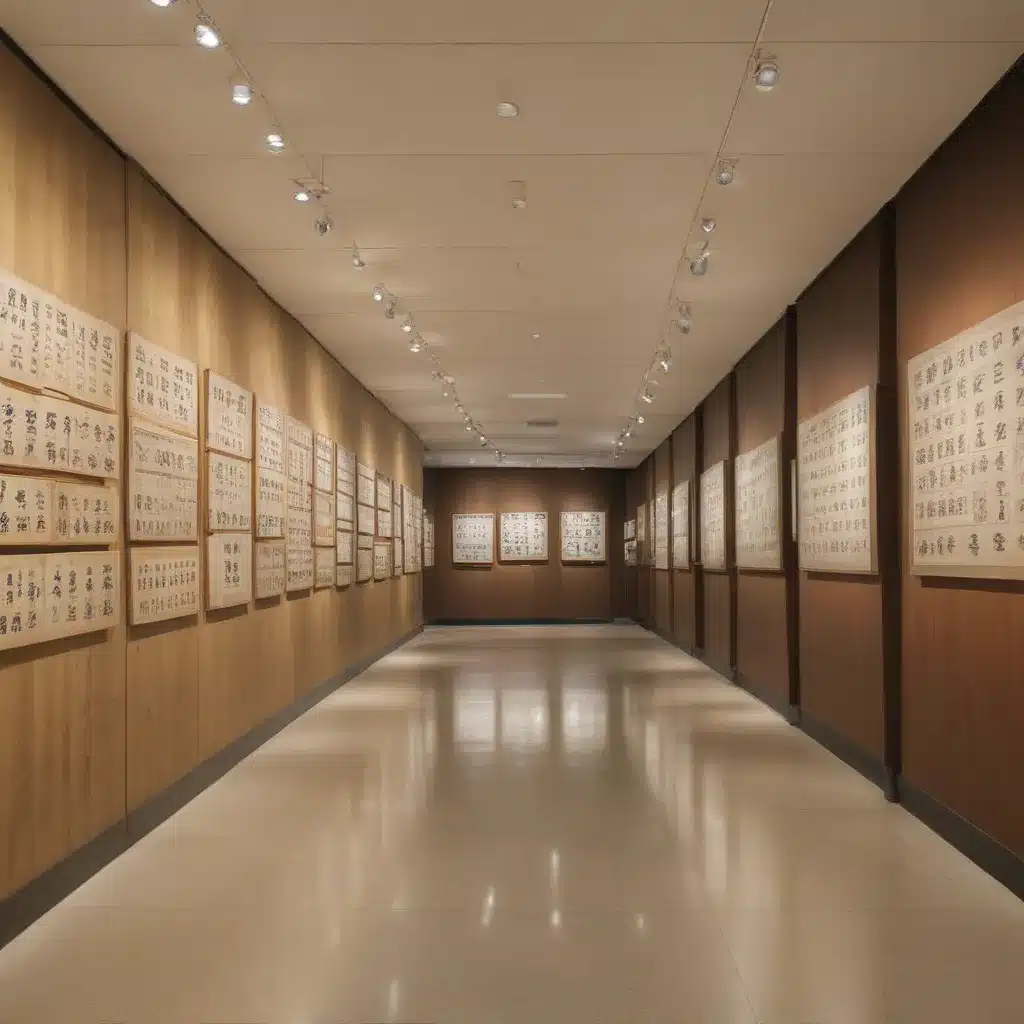
Discovering the Beauty of the Korean Alphabet
Ah, Seoul – the vibrant heart of South Korea, a city that seamlessly blends ancient traditions with modern marvels. As I strolled through the bustling streets, I couldn’t help but feel a growing sense of excitement. You see, I had a mission: to uncover the secrets of the National Hangeul Museum, a hidden gem that had piqued my curiosity.
Exploring the Museum’s Fascinating History
The National Hangeul Museum, nestled in the heart of Seoul, is a testament to the beauty and significance of the Korean alphabet, Hangeul. This remarkable institution, which offers free admission, traces the origins and evolution of this remarkable writing system, created in the 15th century by King Sejong the Great.
As I stepped through the museum’s doors, I was greeted by a warm and welcoming atmosphere. The exhibits were meticulously curated, guiding visitors through the fascinating history of Hangeul. I found myself captivated by the interactive displays, which brought the story to life in a way that truly engaged my senses.
According to TripAdvisor reviews, the National Hangeul Museum is a must-visit destination for anyone interested in Korean language and culture. Visitors rave about the museum’s comprehensive collection, which includes ancient manuscripts, calligraphy, and interactive exhibits that showcase the ingenuity and artistry behind Hangeul.
Discovering the Genius of King Sejong
As I wandered through the museum, I couldn’t help but be in awe of the story behind Hangeul. King Sejong the Great, the 4th king of the Joseon dynasty, was the driving force behind the creation of this remarkable writing system. Frustrated by the complexity of the Chinese characters used at the time, which were inaccessible to the common people, King Sejong set out to create a script that would be easy to learn and use.
The result was Hangeul, a phonetic alphabet that revolutionized the way Koreans communicated. Unlike the Chinese characters, Hangeul is a systematic and logical writing system, with each letter representing a distinct sound. According to the National Hangeul Museum’s website, this ingenious design made it possible for even the most illiterate to learn to read and write in a matter of weeks.
As I learned more about King Sejong’s vision, I couldn’t help but be impressed by his foresight and dedication to empowering the people of Korea. In a time when literacy was the privilege of the elite, he championed the democratization of knowledge, and the National Hangeul Museum celebrates this remarkable legacy.
Exploring the Intricate Beauty of Hangeul
One of the most captivating aspects of the National Hangeul Museum was the opportunity to dive deep into the intricacies of the Korean alphabet. The exhibits showcased the elegant calligraphy and the geometric shapes that form each letter, revealing the artistry and precision behind Hangeul.
I found myself mesmerized by the way the letters seemed to flow together, creating a harmonious and visually striking script. The museum’s calligraphy demonstrations allowed me to witness firsthand the skill and discipline required to master this ancient art form.
Moreover, the interactive exhibits exploring the evolution of Hangeul over the centuries were a true revelation. I learned how the script has adapted to the changing needs of the Korean language, while still maintaining its core principles of simplicity and efficiency.
Connecting with Korean Identity and Culture
As I delved deeper into the museum’s exhibits, I couldn’t help but feel a growing sense of connection to the rich cultural heritage of Korea. The National Hangeul Museum didn’t just showcase the history of the alphabet; it also wove in the stories of the Korean people, their triumphs, and their struggles.
I was particularly struck by the exhibits that highlighted the role of Hangeul in preserving and promoting Korean identity, even during times of foreign occupation. The museum’s collection of historical documents and artifacts demonstrated how the written language became a symbol of national pride and resistance.
As one Redditor shared, for adoptees like myself, who are reconnecting with our Korean roots, the National Hangeul Museum offers a profound and meaningful experience. By delving into the history and significance of the alphabet, I felt a deeper connection to my birth country and a renewed appreciation for the richness of Korean culture.
A Memorable and Enriching Experience
As I prepared to leave the National Hangeul Museum, I couldn’t help but feel a sense of wonder and gratitude. This free cultural institution had not only educated me about the remarkable story of Hangeul but had also ignited a deeper appreciation for the ingenuity and resilience of the Korean people.
I couldn’t wait to share my experience with others, to inspire them to visit this hidden gem in the heart of Seoul and discover the beauty and significance of the Korean alphabet for themselves. The National Hangeul Museum had truly exceeded my expectations, offering a journey of discovery that was both enlightening and deeply personal.
So, if you find yourself in Seoul, be sure to add the National Hangeul Museum to your itinerary. It’s a free and enriching experience that will leave you with a newfound respect for the power of language and the enduring cultural legacy of Korea.

